Ask John: Which Anime is John Most Grateful to have Watched?
Question:
What are the top 20 animes of all time that you consider yourself blessed to have seen? As you are such a prolific anime viewer, I’m curious to know which animes you consider to be the best.
Answer:
The incisiveness of this question demands that I respond in a particular fashion. I could identify the 20 anime that I’m most grateful to have watched – the 20 anime that have most contributed to my appreciation for the art form and my development as an anime fan. But that would include titles such as Galaxy Cyclone Braiger, Iczer-One, Fandora, Dragon Ball Z, Idol Project, Initial D, Hime-chan’s Ribbon, the X² music video, D4 Princess, and Risky Safety that have a nostalgic or influential significance for me, personally, but may not be especially outstanding or memorable for anyone else. There’s also some difference between the anime which I’m most thankful that I’ve been able to watch and the best anime I’ve ever seen. Many titles do fall into both categories, but there are some, like Royal Space Force and Utena, that are among the best anime I’ve ever watched but don’t fall into the category of anime which I feel lucky to have had the opportunity to watch. On a side note, I don’t like to brag so I don’t often make a point of how much anime I’ve watched. However, I will briefly admit that I’ve watched a whole lot of obscure anime, including Wolf Guy, Bavi Stock, Kyomu Senshi Miroku, Business Commando Yamazaki, Cool Cool Bye, Greed, Katteni Shirokuma, Shiawase no Katachi, Totsugeki! Pappara Tai, Gyouten Ningen Batsealer, Seikimatsu Leader Den Takeshi, Koiko no Mainichi, and Ippon Boucho Mantaro, just to name a few. And while all of these viewing experiences have also affected my development as an anime fan, for better or worse, in most cases especially obscure anime are obscure precisely because they’re not good enough to be memorable or influential. So in order to accurately answer the question, I’ll try to identify the anime that I feel grateful to have watched which are also exceptional productions that I’d recommend to other viewers. I dislike strictly ranking entries of similar quality because I think it’s a bit disrespectful. So I’ll provide my list alphabetically.
I was lucky to first watch Akira in the very early 1990s, not long after its initial Japanese home video release. The staggering attention to detail in the picture, the fluidity and lifelike speed of the motion in the film, and the film’s stylistic cinematography that often included shots glimpsed from a distance or partially off-screen all struck me as highly distinctive and impressive.
The 2005 anime film Arashi no Yoru ni is fundamentally a Japanese version of Disney’s 1981 animated film The Fox and the Hound. The children’s story revolves around an unlikely friendship between a wolf and a sheep and their friendship that overcomes their own natures and prejudices, and the demands of their peers. While in summary the film may seem unbefitting, in execution it’s engrossing, unpredictable, and even a little bit edgy.
Studio 4°C and director Kazuto Nakazawa’s short OVA Comedy feels like nothing so much as a gift to animation fans. Inspired by Franz Schubert’s 1815 song “Erlkönig,” the anime short depicts the ironic comedy of a young girl’s encounter with a charming but monstrous black knight. In a mere 11 minutes the short includes humor, gothic drama, bloody action, horror, and a lush visual design reminiscent of Mamoru Oshii & Yoshitaka Amano’s Angel’s Egg.
Despite being a series that should have earned wide acclaim and an avid audience, the Denno Coil TV series seems to have been largely ignored. Although it is an award winning show, it’s still a great injustice that Denno Coil isn’t more widely known and respected. The show may simply have been too creative in an environment in which familiarity generates popularity.
The Dirty Pair motion picture was the first feature length anime I watched, and one of the very first Japanese language anime I ever watched. So I have a nostalgic attachment to this film. But I also continue to appreciate the movie for its near unrivaled spirit of stylish fun. There’s no other country besides Japan that would have produced a film like this, nor is there any other art form besides anime that could produce a film quite like this one.
The Earth Girl Arjuna TV series seemed to appear in 2001 without a lot of advance notice, so I went into it somewhat blindly. I was immediately engrossed by its amazing visual design and score, and as the show developed, I became increasing impressed by its very unique concept and perspective. To the extent of my knowledge, there’s been nothing exactly like Arjuna before or since.
Graveyard of Fireflies is a tragic and heartrending film which I’ve only watched once because I don’t have the emotional fortitude to bear it more than once. It’s a film that I’m grateful to have watched because it indelibly impressed upon me the ability of animation to be as affecting as any other type of storytelling.
Makoto Shinkai’s breakout short film Hoshi no Koe ~ Voices of a Distant Star floored me when I first watched it. It’s technically very impressive for a practically one-man show. Moreover, there’s such an impactful, personal emotion in the short that it serves as a brilliant reminder that anime is an expressive art form.
I’ve watched the Jin-Roh motion picture several times and my appreciation of it may grow with each viewing. I have a great deal of respect for this film because it’s smart, and it has a point to make, and it does so artistically without being pretentious, convoluted, or obscure the way so many other anime are wont to be. I also respect the film for clearly warning viewers of its intent to reject cliché then actually fulfilling that promise.
Director Satoshi Kon’s works have been consistently admirable, impressive, and enthralling, but among them I’m most pleased to have watched Millennium Actress. This magnificent film uses anime to pay homage to Japanese film history in a way that live action film cannot. It’s also a tremendously gratifying human story hidden within spectacularly creative animation.
The 2003 feature film Momoko, Kaeru No Utaga Ki Koeru yo is sibling to socially conscious anime films including Chikyu ga Ugoita Hi, Goto ni Naritai, Inochi No Chikyuu: Dioxin No Natsu, Dai-chan Daisuki, Happy Birthday Inochi Kagayaku Toki, and Glass no Usagi. It’s a haunting and unforgettable drama about a family struggling to love their mentally and physically handicapped daughter, and her attempts to live a “normal” life. The movie is inspiring and also deeply sad because of its willingness to be honest rather than conventional.
The Motto! Ojamajo Doremi: Kaeru Seki no Himitsu movie surprised me. I expected an amusing but conventional children’s magical adventure film similar to the first movie. What the second Doremi movie actually delivers is a very stylized, almost expressionistic piece of animation that uses cinematography and sound design in experimental ways. The story is no less fascinating, relying on subtelty and implication to express a lot of meaning. This is a kids’ film, but discriminating viewers will find a lot in it to appreciate.
Nausicaa of the valley of Wind is a stunningly animated and deeply affecting film. It’s also the first Japanese language Miyazaki film I ever watched. Despite its age, this movie has given up none of its power and prominence.
Despite being an international award winner, the biographical anime film Nitaboh: Shamisen Shiso Gaibun remains almost completely unknown in America. This absolutely gorgeous looking feature truly breathes life into the character and story of blind musician Nitaroh by concentrating on strong characterizations and allowing its compelling story to speak for itself.
The 2007 film Piano no Mori is anime’s take on the literary concept of magic realism. The magical is mundane and the ordinary becomes alien and wondrous. Intertwined with the film’s charming atmosphere are its very human and very honest characters who realize their own failings and strive to overcome them and prevent them from turning into resentment and jealousy. Tekkon Kinkreet won the year’s Japan Academy Prize for best animated film, but I think Piano no Mori was more deserving.
I credit Serial Experiments Lain with being the show that inspired me to begin buying imported Japanese laserdiscs. I’ll concede that the show has more ideas than explanation and a conclusion that seems too abrupt, but its strengths are undeniable. This show oozes atmosphere the way few other anime ever have.
Among the anime that I’m grateful to have had the opportunity to watch only because the title was highly enjoyable, not because it was particularly groundbreaking, one of the first to spring to mind is Tenshi ni Narumon. This lovely and very odd show looks great, is nicely animated, and manages to deftly merge slapstick comedy, romance, fantasy, drama, and even a darker, foreboding tone in its later episodes, all while feeling completely organic. This show got unfairly dismissed because of its superficial appearance. The show really rewards the viewers that are willing to watch it.
I’m also eternally grateful to have watched the Violinst of Hameln television series. Although regrettably short on animation, it’s not lacking in narrative and dramatic weight. This is a fascinating tragic fantasy that’s both highly enthralling and never afraid to be confrontational and depressing. But unlike Ima Soko ni Iru Boku, the Violinst of Hameln TV series doesn’t get so heavy and depressing that it feels both sensationalized and desensitizing.
Yoju Toshi (Wicked City, although I was first introduced to it as “Supernatural Beast City”) was another production that I watched very early in my career as an otaku. It was the third horror anime I ever watched following Vampire Hunter D and Lily C.A.T. (yes, I do keep personal record of these things) and the first to really impress upon me the ability and willingness of anime to be genuinely adult animation.
Group TAC’s 2000 OVA Yonimo Osoroshii Grimm Douwa has been grossly overlooked. And I’m very grateful that I’ve had the opportunity to watch it. This trio of grim (no pun intended) reinterpretations of the Hansel & Gretel, Bluebeard, and Cinderella fairy tales employs very striking animation styles and includes plenty of grotesque violence and sexuality without ever feeling exploitive. This production literally turns children’s fairy tales into provocative animated art films for adults.
Asked for 20 titles, I’ve named exactly that number. In doing so, I’ve excluded a number of titles that also belong on this list, including The Girl Who Leapt Through Time, Download, Kaiba, Five Star Stories, Flag, Char’s Counterattack, Angel’s Egg, Mushishi, Minky Momo: Bridge Over Dreams, Birth, and Oh! Edo Rocket. I’ve prioritized emphasis on the titles that I haven’t discussed at length before, and titles that I just couldn’t bear to marginalize. Not all of the titles I’ve mentioned are easy to find and watch, which suggests that American anime distribution still has room for improvement and diversification. And I have no doubt at all that there are still numerous fascinating anime available that I haven’t been fortunate enough to watch yet.
Add a Comment
You must be logged in to post a comment.
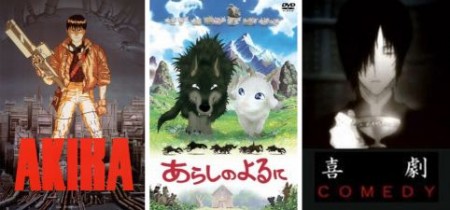
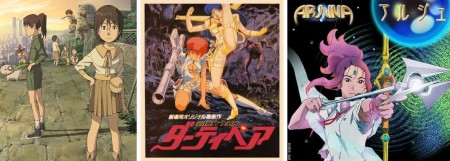
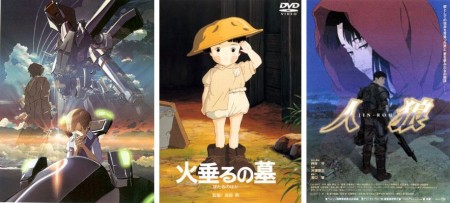
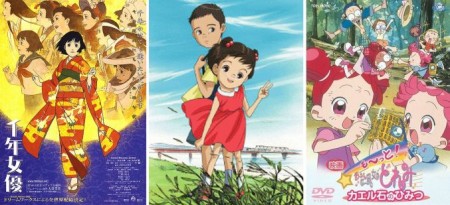
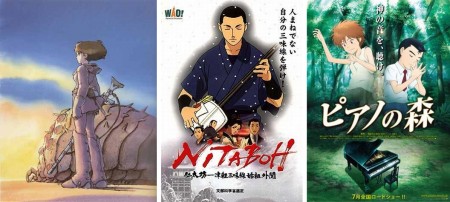
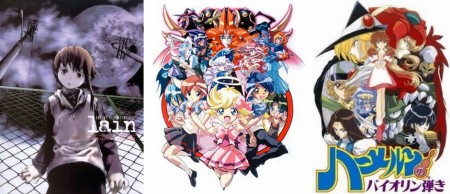
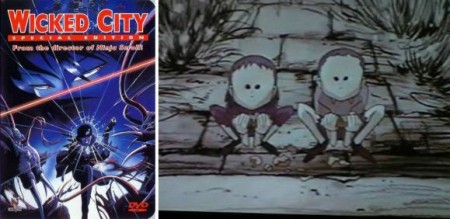


“I was lucky to first watch Akira in the very early 1990s, not long after its initial Japanese home video release.”
I only saw the Geneon theatrical release, but man, that Streamline video was something else. Definitely not like even any Hollywood movie at the time. And, judging by what’s popular now, it’s still ahead of the curve.
“Yoju Toshi (Wicked City, although I was first introduced to it as “Supernatural Beast Cityâ€) was another production that I watched very early in my career as an otaku. It was the third horror anime I ever watched following Vampire Hunter D and Lily C.A.T. (yes, I do keep personal record of these things) and the first to really impress upon me the ability and willingness of anime to be genuinely adult animation.”
You’re a rare one. Most people trash Wicked City and praise Ninja Scroll.
It probably explains why your also in the minority on Highlander, like me. [Does this mean you also thought XTV was one of Kawajiri’s weaker paycheck efforts?] Did you pick up the novel yet? Not really as good as the film. And while we’re at it, did you see the LA Tsui Hark film? ^_-
As for me, I’m glad to have seen Only Yesterday when Takahata was hosting it in L.A., Nasu, when Maruyama was hosting it at BAAF, and Mindgame, when they played it briefly in L.A., too. [Fuck companies which don’t want to license the latter anime, because it’s been Youtubed. [At least if Arias is being accurate about its status…] No one else would buy it otherwise.] It was also nice that they had an L.A. screening of Memories, even though it was licensed by then, because it’s a more enjoyable experience with an audience. Oh, yeah, and seeing the Streamline dubs of Neo Tokyo and Silent Mobius at a midnight screening were also effing awesome. That will never happen again in my lifetime.
As for actual shows, definitely Utena, UY, and Patlabor. Those had talented directors at their peaks who probably will never be as spontaneous as that again. I’m also beginning to think I missed out on Ippo the first time, as I buy discounted copies of it at a nameless competitor. Definitely what a sports anime should be if they actually care about getting the sports aspect right, as well as the “bromance” elements. But that thing was just out of my price range back when Geneon first released it. And I know people like trashing it, because it didn’t follow the story, but that original version of Hellsing got me to read the manga, and that doesn’t always happen with most anime shows. Plus, that remake of Area 88 and Macross Plus are perfect for fans who grew up on the original shows, and fans who haven’t seen the original shows, but who’ve grown up on anime in general. [Well, M+ might be a little more dependant on the source material, but not enough to hurt the main story.] Oh, and Cromartie High is for people who actually went through high school, not people who just lived there, and acted out their shallow fantasies they saw on MTV.
And it’s kind of weird, but I think Nabeshin’s stuff deserves some credit, too, because even though Excel and P^3 ain’t my favorite, Nerima and Wallflower really demonstrate how you can do comedy without relying on gratuitous fanservice. And I thought he also worked on the show, but even so, Gravitation is more accurate about relationships in general than most hetero anime. And Descendants of Darkness is an example of how you improve a manga: by being focused on the story, and not the ADD-stuff.
On a related note, I’ve noticed you omitted Eva and even His and Her Circumstances. Anno grates on you, too, ne? ^_- The only thing I liked from him myself was Gunbuster, and he hasn’t been able to live up to it since then.
Anyway, you should come up with a top anime of the decade list, since other sites are doing regular movies and tv shows right now. And maybe a top manga of the decade thing, too?
Well, I’m glad to see that Jin-Roh made the list; it’s an (under-appreciated) masterpiece in my opinion.
But seriously, Earth Girl Arjuna? That was so dull and preachy I’m not even sure if I bothered to watch the last DVD. (But to each his own, I guess).
JIN-ROH: THE WOLF BRIGADE and SERIAL EXPERIMENTS: LAIN have pretty much laid claim to being of the top titles on my own features/series list for who knows how long — probably since I first watched either of them. I too am grateful for them because I’ve adjusted the manner in which I view and understand the entire medium because of them.
Oh, yeah, forgot to add Berserk and Lupin.